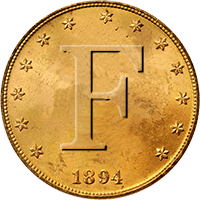A
Anonymous
Guest
The two illustration indicate to me that tagets have clusters of digital numbers depending on how we sweep the coil and other variables in the soil. Looking a the Smartfind expanded screen I can see the crosshairs jump from one point to another if I sweep it over different sizes of tabs which includes pulltabs and tails. If the large rejection square is used in learn we appear to get the cluster but can define this to a one or two pairs of ferrous/conductive readings. I use the tight pattern and sweep different sizes of tabs and tails past the coil for rejection then sweep gold rings past the coil to be accepted. I then save the pattern and go to detect and check the target at full sensitivity to be sure I accpept the gold rings and other targets I am interested in such as a mini ball.
The reason for different patterns is based on the site. I find mini balls in the filed I search but have only found a couple in the parks I search. The ones from the parks are not CW as they don't come fromt he site of a CW battle or camp so they don't matter to me. I would not care if they were rejected if the point so the pattern is made for the type of site. Glenn may well use one for the beach that would be different than one for trashy parks as an example.
We will dig more with a tight pattern because a digital number right next to the one we are interested in may be a ring, as an example, that measures slightly different so we have a slightly different pair of digital reading for ferrous and conductive. The other variables in the soil can skew the reading so I keep several patterns and use the one I think is best for a site.
I am not sure how the electronics average or deal with the cluster of digital reading. I do know on some machines they are averaged to keep the digital readings from flickering. That is one value of Semi-auto sensitivitiy on the Explorer in that it will settle down flickering digital reading or jumpy crosshairs that is we see posted as not locking ON. A solid lock can be achieved with the electronics but may not be the best indication of what is really going on. We may give up some good hits in the name of a solid lock on of targets.
I like what NASA Tom tells us about using our heads. All that data from the detector is for us to make a good decision about what to do. I think that is one reason for just going after everything we hit. Not much thought involved so we are sure we get it all even if we dig up 40 acres to do it. Ha ha Sometimes I think of that with use IM-16 with all setting maxed and dig everything. Man I have hunted sites where that would require a backhoe.
HH, Cody
The reason for different patterns is based on the site. I find mini balls in the filed I search but have only found a couple in the parks I search. The ones from the parks are not CW as they don't come fromt he site of a CW battle or camp so they don't matter to me. I would not care if they were rejected if the point so the pattern is made for the type of site. Glenn may well use one for the beach that would be different than one for trashy parks as an example.
We will dig more with a tight pattern because a digital number right next to the one we are interested in may be a ring, as an example, that measures slightly different so we have a slightly different pair of digital reading for ferrous and conductive. The other variables in the soil can skew the reading so I keep several patterns and use the one I think is best for a site.
I am not sure how the electronics average or deal with the cluster of digital reading. I do know on some machines they are averaged to keep the digital readings from flickering. That is one value of Semi-auto sensitivitiy on the Explorer in that it will settle down flickering digital reading or jumpy crosshairs that is we see posted as not locking ON. A solid lock can be achieved with the electronics but may not be the best indication of what is really going on. We may give up some good hits in the name of a solid lock on of targets.
I like what NASA Tom tells us about using our heads. All that data from the detector is for us to make a good decision about what to do. I think that is one reason for just going after everything we hit. Not much thought involved so we are sure we get it all even if we dig up 40 acres to do it. Ha ha Sometimes I think of that with use IM-16 with all setting maxed and dig everything. Man I have hunted sites where that would require a backhoe.
HH, Cody
